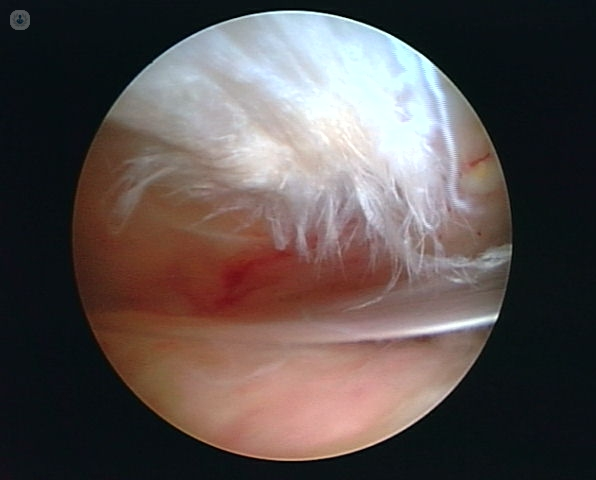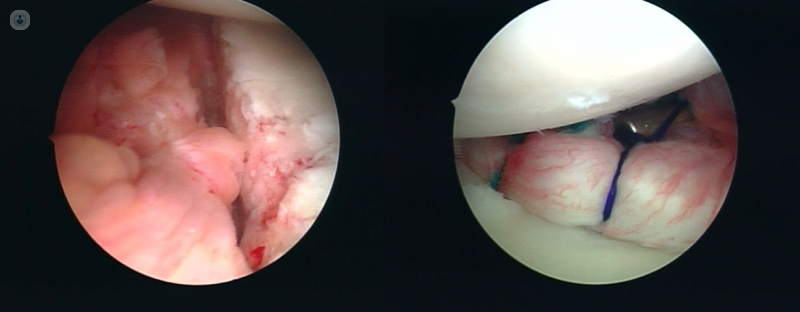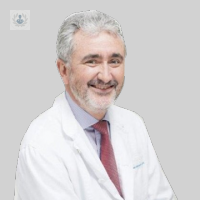Shoulder arthroscopy: risks and recovery
Written by:Shoulder arthroscopy is a surgical diagnostic and therapeutic technique injuries affecting such joint. As it is a semi - invasive technique with small incisions in the skin, it requires more anatomical knowledge by the specialist Traumatology not to injure nerve or vascular structures.
A system of cannulas about 0.4 cm diameter is used to house an optical camera is known as an arthroscope. This arthroscope using a cold light source not to injure the tissues to be treated and whose images are projected on a monitor where all surgical gestures are controlled.
 Arthroscopic subacromial image acromial conflict with coraco fraying of ligament,common cause of shoulder pain in activities above shoulder height
Arthroscopic subacromial image acromial conflict with coraco fraying of ligament,common cause of shoulder pain in activities above shoulder height
This surgical technique to all patients who due to the severity of the injury or emergency require it also to those in which conservative treatment has failed or rehabilitation is recommended. They are patients who present with nocturnal pain that prevents normal rest or having functional impotence of the limb in activities of daily living such as dressing, grooming, conduct and perform low - level sport, among others.
Among the pathologies of consultation include: recurrent shoulder instability, rotator cuff tear, SLAP lesion biceps, calcific tendinitis, subacromial conflict, arthropathy AC, AC dislocation, adhesive capsulitis, chondrocalcinosis or rheumatoid arthritis.
 Bankart lesion by instability in the previous glenoid and treated by arthroscopy
Bankart lesion by instability in the previous glenoid and treated by arthroscopy
What are the risks shoulder arthroscopy?
The risks and complications that can lead shoulder arthroscopy can be classified into three sections:
- Anesthetics: will be evaluated by specialists in this section to determine the best anesthetic technique, not differing from other surgical procedures and surgery being not very long lasting.
- Per-operative: the surgeon must have the knowledge and appropriate measures to prevent and solve these complications during surgery skills.
- Postoperative postoperative complications are those of any joint surgery. For example: infection, which is very rare in arthroscopic surgery; and, joint stiffness or residual pain. For the latter it is very important to a pattern of proper exercises and to begin to perform immediately at the time of discharge.
Shoulder arthroscopy: recovery
The recovery of shoulder arthroscopy depends on the lesions to be treated and the activity performed by the patient. Therefore, always working with custom protocols.
The recovery period varies from one to two weeks in surgeries without cuff injuries, up to two to three months if the rotator cuff was repaired. Even can be a period of 4 to 6 months if treated in throwing athletes or contact.
After removing the sutures, all patients can perform activities such as eating or toileting from seven to ten days despite wearing an immobilizing bandage.
Edited by: Noelia Pino


